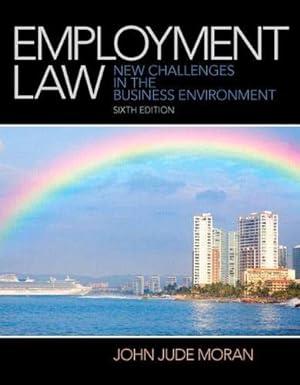Question
The case of Bauer V. Lynch , on pages 222-226 of your Employment Law for Human Resource Practice text, examines the legalities of employment screening
The case ofBauer V. Lynch, on pages 222-226 of yourEmployment Law for Human Resource Practicetext, examines the legalities of employment screening exams during the selection process.
Address the following as you respond to the case:
- Summarize the legal issues and the outcome of the case.
- Analyze the evidence of discriminatory effects in this case.
- Analyze the distinction the court is drawing between job-relatedness and business necessity.
- Examine the evidence that the gender-normed physical fitness tests used by the Federal Bureau of Investigations are job-related and necessary.
- Explain your position on this topic of gender-normed physical fitness tests used in the pre-employment process.
From the textbook:
"For more than ten years, the FBI has measured the physical fitness of its New Agent Trainees ("Trainees") by using gender-normed standards. In July 2009, plaintiff Jay J. Bauer flunked out of the FBI Academy after falling a single push-up short of the thirty required of male Trainees. Bauer then filed this Title VII civil action, alleging that the FBI had discriminated against him on the basis of sex, in that female Trainees were required to complete only fourteen push-ups. The ... district court granted Bauer's motion. The Attorney General has appealed and, as explained below, we vacate and remand.
The FBI trains its Special Agent recruits at the FBI Academy in Quantico, Virginia. The twenty-two week program consists of four main components that assess Trainees' proficiency and suitability for FBI service, each of which must be successfully completed to graduate from the Academy: academics; firearms training; practical applications and skills; and defensive tactics and physical fitness. Various assessment tools are used to ensure that Trainees demonstrate adequate proficiency in each component of the Academy's curriculum. For example, academic training requires successful completion of a series of written examinations. Firearms training requires attendance at training sessions and the successful completion of marksmanship qualifications. Of importance here, all Trainees must pass a physical fitness test (the "PFT"). * * * The FBI requires every Special Agent recruit to pass the PFT twice: once to gain admission to the Academy, and a second time to graduate.
The FBI has not always utilized the current version of the PFT. Prior to 2004, prospective Trainees proved themselves physically fit for admission to the Academy by completing a timed 1.5-mile run. Once at the Academy, Trainees were required to pass a five-part test, comprised of pull-ups, sit-ups, push-ups, a 120-yard shuttle run, and a two-mile run. * * * [B]ecause the five-part test had not been formally validated as a physical fitnessassessment, the FBI would not dismiss Trainees solely for failing it. Accordingly, in 2003, the FBI decided to develop the PFT, which would be used as a requirement for both admission to and graduation from the Academy, and could be validated as a reliable assessment tool for personnel decisions.
To design the new testing protocol, the FBI considered a list of more than 200 essential tasks of the Special Agent position and determined that nearly half of those tasks related directly to overall physical fitness. Supervisory agents in charge of physical training at the Academy offered expertise regarding the types of training events that best served as indicators of Trainees' overall levels of physical fitness. The FBI also considered standards of the exercise physiology industry. Those deliberations led to the selection of four events, to be completed in a single test in the following sequence: one minute of sit-ups; a 300-meter sprint; push-ups to exhaustion; and a 1.5-mile run. The events required Trainees to demonstrate baseline levels of fitness in core muscle strength and endurance, short-term physical power and speed, upper body strength and endurance, and aerobic capacity and endurance, respectively.
With the battery of events selected, the FBI evaluated and developed the minimum standards that Trainees would be required to satisfy in order to pass the PFT. To that end, the FBI implemented the PFT as a pilot program in each of its seven 2003 Academy classes and analyzed the results (the "Pilot Study"). The Pilot Study consisted of 322 Trainees258 men and 64 womenwho completed the PFT during their first week at the Academy. The Pilot Study results were then subjected to thorough statistical analyses and standardized so that the FBI could compare Trainees both within and across the four events.
As a part of the statistical standardization, the FBI sought to normalize testing standards between men and women in order to account for their innate physiological differences. The FBI reasoned that, due to such distinctions, equally fit men and women would perform differently in the same events. Accordingly, the FBI determined that male and female Trainees would be required to complete the four PFT events, but that different minimum standards would be established for each sex. The FBI concluded that use of such a gender-normed framework would have the complementary benefits of allowing the measurement of equivalent fitness levels between men and women while also mitigating the negative impact that would otherwise result from requiring female Trainees to satisfy the male-oriented standards."
Step by Step Solution
There are 3 Steps involved in it
Step: 1

Get Instant Access to Expert-Tailored Solutions
See step-by-step solutions with expert insights and AI powered tools for academic success
Step: 2

Step: 3

Ace Your Homework with AI
Get the answers you need in no time with our AI-driven, step-by-step assistance
Get Started


